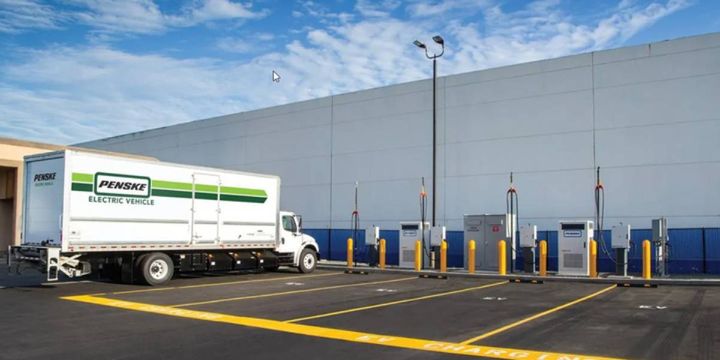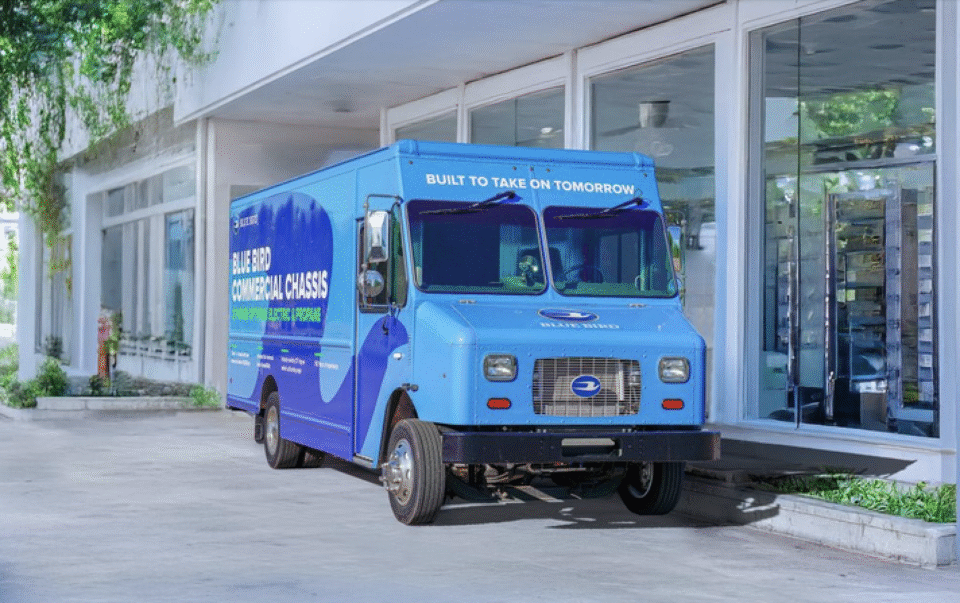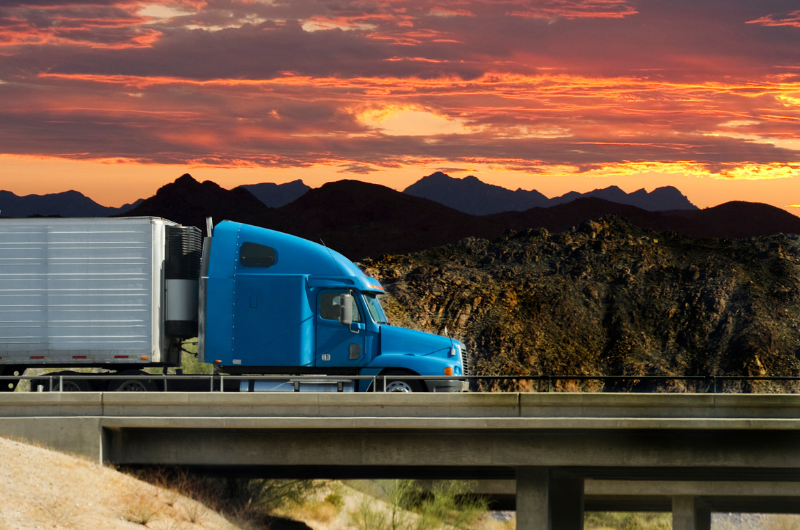Deep Dive on EV Data Shows Realities of Medium-Duty Fleet Electrification


Data will enable preventative maintenance by alerting fleet managers to any anomalies or imbalances on electric trucks. It also works as a driver training tool, identifying for example drivers who gun the vehicle or fail to use regenerative braking. The analytics can inform route planning as well as charging infrastructure needs.
Original Article: Heavy Duty Trucking
Electric vehicles may not perform in the way users first expect, but for fleets they are proving their road-worthy mettle while pointing to far more potential in the years ahead, according to results from aggregated driving data.
By their design and structure, EVs lend themselves to being more data-driven than any type of other vehicle. Data spurs the insights and metrics that lead to more efficiency for a fleet and minimizes energy demand while maximizing duty cycles.
Two analysts of medium-duty EV fleet data recently shared their results from early fleet adopters, which can help fleet managers choose the best path to electrification.
Adam Wilkum, director of E-Mobility for ROUSH CleanTech, and Nick Bettis, director of marketing and sales operations for Lightning eMotors, teamed up for a presentation Nov. 11 at the 2021 Fleet Forward Conference.
In this session, Bettis and Wilkum addressed some misinformation versus realities about medium duty fleet electrification. They drew on tangible results and findings as well as the data from many vehicle-duty cycles.
Demo Truck Fleets
Roush has more than 40,000 vehicles on the road primarily running on propane auto gas. But some of its large fleet customers have come to them with an urgent need to buy electric vehicles in the medium duty weight class. Lightning eMotors adapts the F650 and F750 to electric. The cities of Los Angeles and Santa Monica have been early adopters of their first-generation trucks. Penske has been the launch customer with the trucks. Customers such as Iron Mountain, Bimbo Bakeries and Costco, which all move goods or people, want to try out the electric trucks. Overall, 2,500 Roush-propelled fleets have traveled more than one billion miles.
Lightning eMotors has been electrifying medium duty vehicles for several years now. The company saw the potential for electrification in 2008 and converted to an all-electric vehicle company following an initial emphasis on hybrids. It has been building EVs and putting them on the road for the last three to four years. The company can convert conventional vehicles to electric by removing the internal combustion engine parts and replacing them with powertrain batteries, wire harnesses and software. Since it started building EVs in 2017, Lightning eMotors has put 200 vehicles on the road and will produce 300 this year alone.That has produced 700,000 miles of real-world fleet data with a focus on Class 3-7 trucks. They collect 200 points of data every second, which is transmitted back to its network operation center in Colorado.

Nick Bettis, director of marketing and sales operations for Lightning eMotors, and Adam Wilkum, director of E-Mobility for ROUSH CleanTech, teamed up for a presentation Nov. 11 at the 2021 Fleet Forward Conference where they drew on tangible results and findings as well as the data from the duty cycles of medium-duty electrified truck fleets.
Real Street Experiences
In assessing Roush EV performance, Wilkum said a range of 100 to 150 miles is considered ideal now for Class 6 truck last-mile delivery.
“I think when we talk to fleets about electrification in the medium duty space, we often spend more time talking about charging than we actually do talking about the vehicle,” Wilkum said.
In one urban delivery eight-hour duty cycle sample in Los Angeles, the electric trucks drove 97 miles with a mix of residential and freeway driving. With a low HVAC power load, the vehicles used 64% of the power of 88 kWh batteries with 50% GVWR.
The trucks are run by the city of Los Angeles sanitation department where a medium duty truck has 100 miles of range at maximum payload capacity. But since the truck was hauling receptacles with mostly plastic, it only used 64% of its battery capacity over 97 miles.
“You have to understand how much weight you will be putting on that truck to get a real-world estimate of your range,” Wilkum said. “There are other considerations like the health of the battery, and you don’t want to deplete the battery 100% every day so you have to leave yourself some wiggle room.”
Another factor is the HVAC load that cools a warm cabin, which is the most intense draw on the batteries. A separate cooling unit for box trucks has lower energy usage, he said. Speed and terrain also determine range. In this case, speed below 40 mph allows a “glide slope” that uses minimal energy.
“The data came from a telematics study we did for a catering company, and we actually installed vehicle data recorders on the trucks and tracked them for two months,” Wilkum said. “And we found the cabin heating load is almost double that of the unit. So it’s significant.”
As far as the state of charging, slower urban speeds don’t consume much battery power. “But look how drastically it depletes once you get up the highway speed,” Wilkum said, citing a graph. “So that’s another thing that really factors into the range that the truck is capable of. If you’re going to be on a milk run in a neighborhood all day running 20 to 40 miles an hour, you will get much better range than if you’re running at highway speeds at 65 miles an hour all day.”
He also favors Level 2 over Level 3 charging because they are less expensive and can electrify an entire fleet when properly scheduled. Fleets on routine duty cycles and routes produce predictable charging patterns. “It’s not a passenger car,” Wilkum said. “It won’t be doing different things every day of the week. These trucks do the same job every day and they come back to the same base every day.”
Wilkum noted factors in EV fleet efficiency: 1) Miles per kilowatt hour is preferable to kilowatt hour per mile; 2) The type of region is part of total kilowatt hours consumed is a big factor in range. The electric motors can be tuned to the challenge level of the region the truck operates in. He advised fleet operators to work with the OEMs to set the most suitable region level.
Detailed Insights
Bettis presented aggregate data from 40 different fleets monitored during the last two years across four different truck classes. Key findings include:
- Temperature impact on range: Range rises or stays the same during hot conditions.
- Cooling of the battery or cabin requires less power than heating it.
- Range drops about 10% in extreme cold conditions, such as sub-zero double-digits.
- A significant drop-off in range in extremely hilly conditions, with some fleet vehicles showing a 11% decline.
- The power usage to climb steep hills and run at higher elevations uses more power than what you would gain from regenerative braking while doing downhill. However, in one use with dump truck traveling in and out of a mine in Chile, it gains more power coming downhill and does need to charge.
- Payload weight did not affect range as much as expected in one use case of a beverage distributor in Northern California.
- Driver training goes a long way toward increasing range. Monitoring them helps educate them. Range is diminished by such behaviors as blasting AC or heat, not using regenerative braking, shotgun starts, and highway driving.
- Route planning leads to longer ranges.
- EV fleet clients tend to use both Level 2 and 3 chargers so they have the options to charge vehicles overnight as well as top off with quick charges during busy days with multiple routes.
- To successfully adopt an EV fleet, the users need to be educated during the sales period on routes and usage as much as the types of EVs they need.
- Learning about a client’s range needs, loads and route demands leads to better choices and practices, Bettis said.
- Third parties also can advise EV fleet adopters using telematics data and applying it to the vehicles and charging a potential client would need.
Data Informs EV Attributes
Wilkum predicted as technology advances the EV batteries will get smaller while the energy density will increase.
“I think you’re going to see extended range with the same footprint,” he said. “And I can say we’re already getting solid state samples so we can see where the technology is headed. It will keep getting better.”
Data will enable preventative maintenance by alerting fleet managers to any anomalies or imbalances. It also works as a driver training tool, identifying for example drivers who gun the vehicle or fail to use regenerative braking. The analytics can inform route planning as well as charging infrastructure needs.
The data already supports the total cost of ownership value of the EV on a cost per mile basis, Wilkum said.
“I think initial purchase price is the hurdle that we’re still facing,” he said. “CARB (California Air Resources Board) predicts battery pricing on medium and heavy duty vehicles will decline about 9% year over year, and that model is already a couple years old. It’s the best data that I’ve been able to find particular to medium and heavy-duty vehicles. I would say the lower the vehicle class you get the more data there is. So, classes 6, 7 and 8 probably have the least amount of data right now. I think the things that are hanging people up is where will they get the vehicle serviced, it may become obsolete in two years, and the purchase price is too much of a stretch.
Wider clean energy mandates, regulations and incentives from governments will spur the economies of scale in production of medium to heavy duty electric trucks that will lead to more affordability, Wilkum said.
Lower battery costs will be passed on to buyers but likely won’t make EVs price neutral with internal combustion engine vehicles, since lithium ion and lead acid batteries will always cost more than aluminum gas tanks, Bettis added.
“The cost is always going to be higher on the front end but the TCO of saving $1,000 $1,500 a month in operational costs with these vehicles leads to a TCO (balance) of about 18 months.
Drivers’ Verdicts
Wilkum cited driver surveys showing most enjoy operating the electric trucks. They like them more than other alternative fueled vehicles, with one commenting the e-truck would have to be pried out of his hands if it’s taken away. The fleet operations prefer higher ground clearance, meaning no batteries between the frame rails of a truck. He said the drivers did not make many negative comments.
“The only thing we really heard was they wished the truck had air ride suspension and some more creature comforts, but it was overwhelmingly positive,” he said. “From a driver perspective, I think this will be a recruiting tool for companies. If you have a fleet application where you have electric vehicles, it will be a much better driver experience and diesel or gasoline.”
Bettis added, “One thing we hear fairly frequently is ‘I don’t understand this regenerative braking thing.’ So it takes about one shift and then they come back and go that’s really cool, but getting them past that one shift is typically a challenge. And that’s where some of that training comes in. And it doesn’t usually last. One pedal driving is far superior. And once they experience it for a few hours, they usually they come on board.”
Wilkum said the telematics data shows drivers master the EVs in a short period. “At the end of month two, they get it. It’s a very short learning curve. And they understand how to maximize the efficiency of the vehicle. You can really see it in the route data.”




